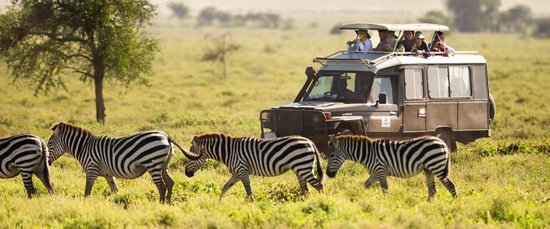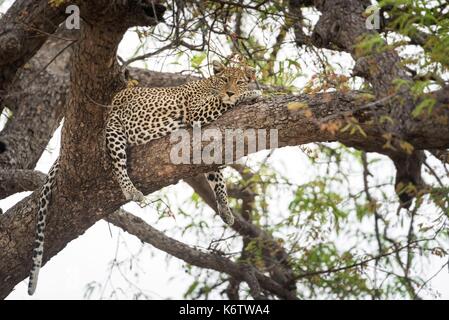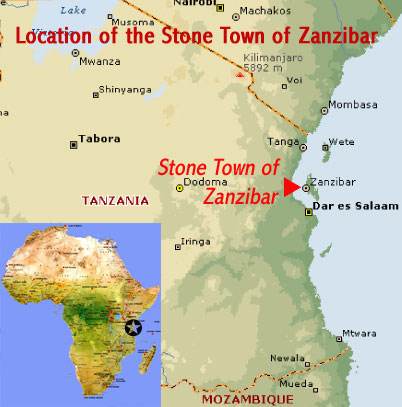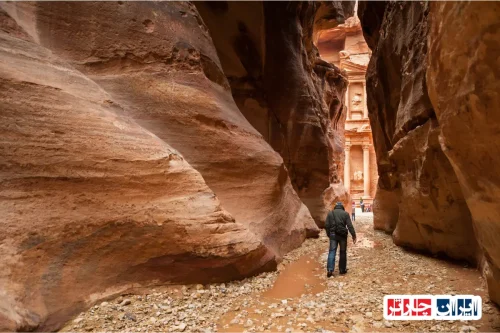Discover the Wonders of Ruaha National Park in Iringa Region Tanzania
Ruaha National Park in Iringa Region Tanzania stands as one of Africa’s most remarkable and diverse wildlife sanctuaries, offering an unparalleled experience for nature lovers and adventure seekers alike. Covering an expansive area of over 20,000 square kilometers, this park is renowned for its rich biodiversity, stunning landscapes, and vital role in conservation efforts. Visitors to Ruaha can witness a vast array of wildlife, including elephants, lions, leopards, cheetahs, and numerous species of antelope and birdlife, making it a top destination for safari enthusiasts. The park’s remote location and pristine environment provide an authentic safari experience away from crowded tourist spots, allowing travelers to immerse themselves in the untouched beauty of Tanzanian wilderness. Whether exploring the lush riverine forests, observing the majestic wildlife at waterholes, or enjoying the breathtaking sunsets over the savannah, Ruaha National Park in Iringa Region Tanzania offers unforgettable adventures that showcase the true essence of African nature. For those seeking a unique and immersive safari experience, Ruaha is the ideal destination to connect with wildlife and experience the natural splendor of Tanzania’s protected areas. Learn more about this incredible park and plan your journey today through Ruaha National Park-Iran Charter, your gateway to exploring the heart of Tanzania’s wilderness and discovering the unmatched beauty of Iringa Region.

Discover the Unique Geography and Natural Beauty of Ruaha National Park in Iringa Region Tanzania
Ruaha National Park, located in the heart of the Iringa Region in Tanzania, boasts an extraordinary geographical landscape that encompasses vast savannahs, rugged mountains, and winding rivers. Its diverse terrain provides a perfect habitat for a wide array of wildlife species. The park’s prominent feature, the Great Ruaha River, sustains life across the region and creates vital ecosystems for numerous animals and plants. Visitors can explore expansive plains dotted with acacia trees, lush riverbanks, and rocky outcrops that offer breathtaking views and unique photo opportunities. The park’s elevation varies from low-lying river valleys to highland areas, supporting diverse flora and fauna. Its natural beauty is complemented by scenic vistas of rolling hills and distant mountain ranges, making it a must-visit destination for nature lovers and adventure seekers alike.
Rich Biodiversity of Ruaha National Park in Iringa Region Tanzania
Ruaha National Park is renowned for its incredible biodiversity, hosting over 570 bird species and numerous mammals, including elephants, lions, leopards, cheetahs, and the rare African wild dogs. The park serves as a critical sanctuary for endangered species such as the African elephant and the sable antelope. Its diverse habitats—from dense woodlands and open plains to riverine forests—support this rich variety of life. Birdwatchers can enjoy sightings of majestic raptors, kingfishers, and migratory waterfowl, making it a paradise for ornithologists. The conservation efforts in the park aim to protect these species from poaching and habitat loss, ensuring the preservation of this natural heritage for future generations. The park’s ecological significance extends beyond Tanzania, contributing to global biodiversity conservation efforts.
Best Times to Visit Ruaha National Park in Iringa Region Tanzania for Wildlife Viewing
The optimal time to experience the wildlife spectacle in Ruaha National Park is during the dry season, from June to October, when animals congregate around water sources, making sightings easier. During these months, the weather is generally sunny and cool, providing ideal conditions for safaris and photography. The wet season, from November to May, transforms the landscape into lush greenery, attracting migratory birds and offering stunning scenery, although wildlife sightings may be less frequent due to dispersed animals. Planning your visit during the dry months ensures the best chances to observe predators and large herds of elephants, lions, and buffalo in their natural habitat. The park’s climate and seasonal variations play a crucial role in planning an unforgettable safari adventure in this pristine wilderness.
Exciting Activities and Adventures in Ruaha National Park in Iringa Region Tanzania
Visitors to Ruaha National Park can indulge in a variety of thrilling activities that showcase the park’s natural splendor. Guided safaris by 4×4 vehicles allow close encounters with wildlife such as elephants, lions, and cheetahs in their natural environment. Walking safaris provide an immersive experience, offering a chance to learn about flora and fauna from expert guides. Birdwatching is also popular, with opportunities to spot rare and migratory species. For a unique perspective, hot air balloon safaris offer panoramic views of the expansive landscape at sunrise. Additionally, cultural visits to local villages provide insight into the traditions and lifestyles of indigenous communities. These activities ensure a memorable and diverse safari experience in the wilds of Iringa Region.
Inspiring Stories and Memorable Experiences of Visitors in Ruaha National Park in Iringa Region Tanzania
Many travelers leave Ruaha National Park with unforgettable stories of close wildlife encounters and breathtaking scenery. Witnessing a pride of lions resting after a hunt or elephants bathing in the river creates lasting memories. Photographers cherish the opportunity to capture the golden hour light illuminating herds of animals against the backdrop of the park’s dramatic landscape. Visitors often share tales of serenity during sunrise game drives and the thrill of spotting elusive predators. Cultural interactions with local communities add depth to the experience, enriching travelers’ understanding of the region’s heritage. These personal stories highlight the park’s role as a sanctuary for wildlife and a source of inspiration for nature lovers and adventure enthusiasts alike.
Conservation Challenges and Future Strategies for Ruaha National Park in Iringa Region Tanzania
Despite its ecological importance, Ruaha National Park faces challenges such as poaching, human-wildlife conflict, and habitat degradation. Efforts to combat illegal hunting and protect endangered species are ongoing, involving ranger patrols and community engagement programs. Climate change also poses threats by altering rainfall patterns and water availability, impacting ecosystems. To ensure the park’s sustainability, future strategies focus on expanding protected areas, promoting eco-tourism, and fostering partnerships with local communities. Education campaigns aim to raise awareness about conservation importance, encouraging responsible tourism and local participation. Implementing innovative technologies like drone surveillance and GPS tracking enhances anti-poaching measures. These combined efforts are vital to preserving Ruaha’s natural heritage for generations to come.
How to Access and Plan Your Trip to Ruaha National Park in Iringa Region Tanzania
Reaching Ruaha National Park is convenient via air and road. The nearest major airport is in Iringa, with domestic flights connecting from Dar es Salaam and Zanzibar. From the airport, travelers can arrange private transfers or guided tours to the park, approximately a 4-5 hour drive. Alternatively, road trips from Dar es Salaam or Dodoma are popular, offering scenic routes through Tanzanian countryside. It is advisable to book guided safaris or hire local drivers familiar with the terrain for a smoother experience. The park’s accessibility varies seasonally, with dry months providing better road conditions. Planning ahead, including necessary permits and accommodations, ensures a seamless journey into this wilderness area. Expert advice on the best travel times and routes will help maximize your safari adventure in Iringa Region.
The Significance of Ruaha National Park in Global Conservation and Its Role in Protecting Natural Heritage
Ruaha National Park plays a vital role in conserving Africa’s unique ecosystems and endangered species. Its extensive habitats serve as a refuge for species at risk of extinction, contributing significantly to global biodiversity preservation. The park’s designation as a protected area helps maintain ecological balance and supports scientific research. By attracting eco-tourists and wildlife enthusiasts worldwide, Ruaha generates revenue that funds ongoing conservation initiatives. Its success demonstrates the importance of collaborative efforts between government agencies, local communities, and international organizations in safeguarding natural heritage. Protecting Ruaha is not only crucial for Tanzania but also for the global community committed to preserving the planet’s rich biological diversity for future generations.
Innovative Conservation and Sustainable Development Plans for Ruaha National Park in Iringa Region Tanzania
Looking ahead, Ruaha National Park is implementing innovative conservation strategies that balance ecological preservation with sustainable tourism development. These include expanding community-based conservation programs, promoting eco-friendly lodges, and supporting local livelihoods through wildlife-friendly initiatives. Advanced monitoring technologies, such as remote sensing and wildlife tracking, enhance protection efforts. Education and awareness campaigns encourage responsible visitor behavior and community participation. The park’s management aims to create a model of sustainable coexistence between humans and wildlife, ensuring ecological integrity while fostering economic growth. These future-oriented plans are essential for maintaining the park’s status as a premier safari destination and a global conservation success story, securing its natural legacy for generations to come.
Frequently Asked Questions about Ruaha National Park in Iringa Region, Tanzania
- What makes Ruaha National Park unique in Tanzania?
- Ruaha National Park stands out due to its vast and diverse landscape, featuring expansive savannahs, rugged mountains, and winding rivers. Its prominent feature, the Great Ruaha River, sustains a rich ecosystem supporting numerous wildlife species. The park’s varied terrain offers breathtaking views and excellent opportunities for wildlife photography, making it a must-visit destination for nature lovers.
- Which wildlife species can visitors expect to see in Ruaha?
- Visitors can encounter over 570 bird species and a wide array of mammals including elephants, lions, leopards, cheetahs, and the rare African wild dogs. The park is also a sanctuary for endangered animals like the African elephant and sable antelope, providing excellent opportunities for wildlife observation and photography.
- When is the best time to visit Ruaha for wildlife viewing?
- The optimal period is during the dry season from June to October, when animals gather around water sources, making sightings easier. The weather is generally sunny and cool, ideal for safaris. Visiting in this season increases chances of spotting predators and large herds of elephants and buffalo.
- What activities can tourists enjoy in Ruaha National Park?
- Tourists can participate in guided safaris by 4×4 vehicles, walking safaris, birdwatching, hot air balloon rides, and cultural visits to local villages. These activities offer diverse ways to experience the park’s natural beauty and learn about local traditions.
- Are there memorable stories from visitors to Ruaha?
- Many visitors recount unforgettable moments such as witnessing lions resting after a hunt, elephants bathing in the river, and capturing stunning sunrise shots. Cultural interactions and close wildlife encounters often leave lasting impressions, enriching the overall safari experience.
- What are the main conservation challenges faced by Ruaha?
- The park faces threats like poaching, human-wildlife conflict, and habitat degradation. Climate change also impacts water availability and ecosystems. Conservation efforts include anti-poaching patrols, community engagement, and habitat preservation initiatives to address these issues.
- How can travelers access Ruaha National Park?
- The park is accessible via Iringa Airport with domestic flights from Dar es Salaam and Zanzibar. Road trips from major cities like Dar es Salaam or Dodoma are also common. Booking guided safaris or hiring local drivers ensures a smoother journey, especially during dry seasons when roads are in better condition.
- Why is Ruaha important for global conservation efforts?
- Ruaha plays a critical role in protecting Africa’s biodiversity, serving as a refuge for endangered species and supporting scientific research. Its conservation attracts eco-tourists, generating revenue that funds ongoing preservation projects, making it vital for both local and global ecological health.
- What sustainable development plans are in place for Ruaha?
- Future strategies include expanding community-based conservation programs, promoting eco-friendly lodges, and supporting local livelihoods. Advanced monitoring technologies and responsible tourism initiatives aim to balance ecological preservation with economic growth, ensuring the park’s long-term sustainability.
- How does Ruaha contribute to Tanzania’s tourism industry?
- As one of Tanzania’s premier safari destinations, Ruaha attracts wildlife enthusiasts from around the world, boosting local economies through tourism. Its pristine wilderness and rich biodiversity make it a key component of the country’s eco-tourism sector.
- What should travelers prepare before visiting Ruaha?
- Visitors should arrange necessary permits, book accommodations in advance, and plan their safaris with experienced guides. Packing suitable clothing, camera gear, and essentials for outdoor activities ensures a comfortable and enjoyable experience.
- Are there cultural experiences available in the region?
- Yes, visitors can explore local villages to learn about indigenous traditions and lifestyles. Cultural visits provide insights into the community’s heritage and foster respectful interactions between tourists and local residents.
- What role does eco-tourism play in Ruaha’s future?
- Eco-tourism promotes sustainable visitation practices, supports local communities, and funds conservation efforts. It encourages responsible behavior among tourists, helping to preserve the park’s natural resources for future generations.
- How can I contribute to conservation efforts in Ruaha?
- Travelers can support eco-friendly lodges, participate in community projects, and follow park guidelines to minimize environmental impact. Raising awareness and advocating for wildlife protection also contribute to ongoing conservation initiatives.

























